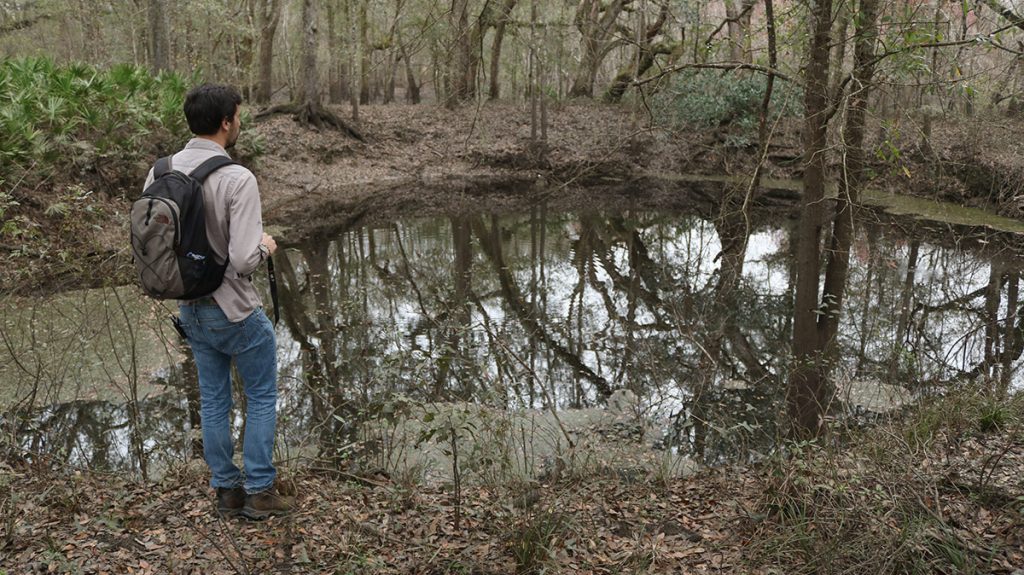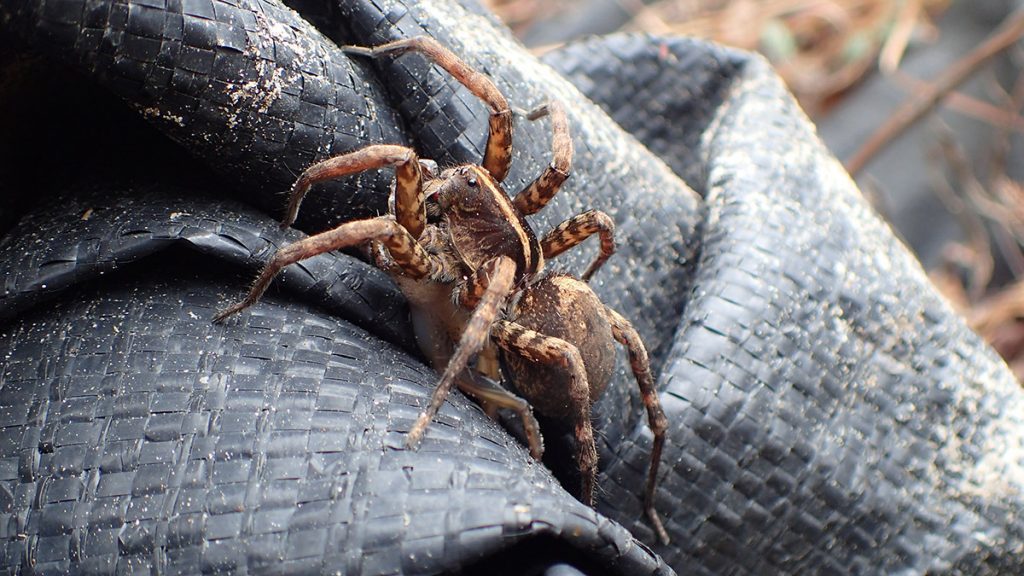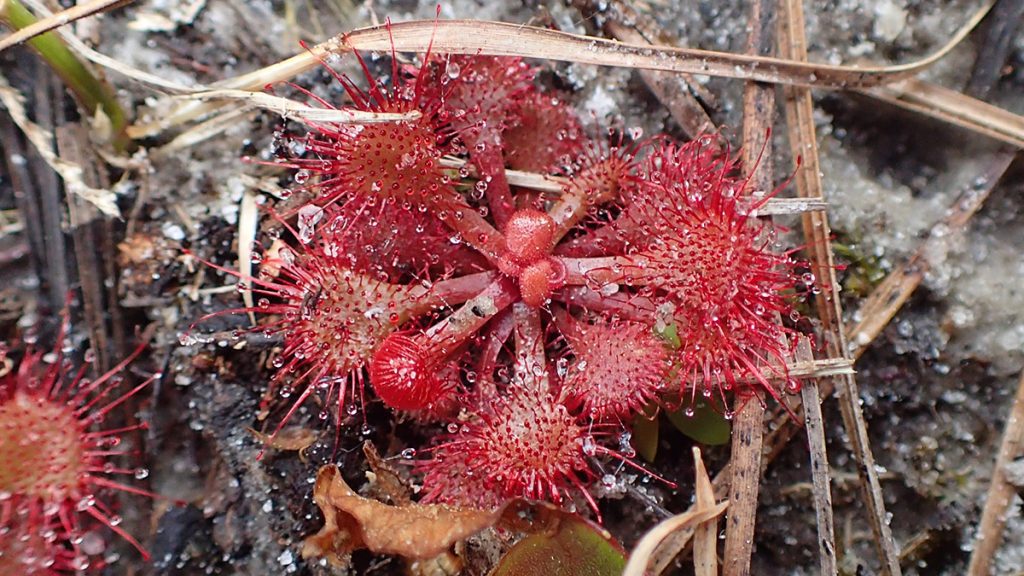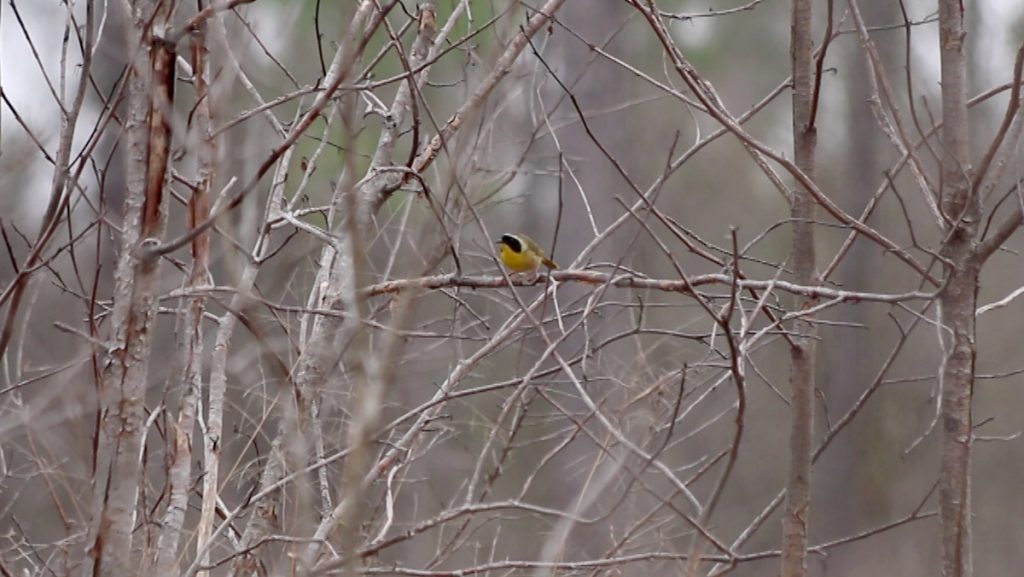In his first guest post, Peter Kleinhenz took us to Lake Elberta, a central location for our EcoCitizen Day (a City Nature Challenge Event) on April 27. Today, he takes us to the site of another City Nature Challenge event, a bioblitz at L. Kirk Edwards WEA on April 28. To win the challenge, we need people to know iNaturalist- you can get some tips in the video and blog post below:
Subscribe to the WFSU Ecology Blog to receive more videos and articles about our local, natural areas, and subscribe to the WFSU Ecology Youtube Channel.
Peter Kleinhenz Florida Fish and Wildlife Conservation Commission
Sometimes, all you hear is the wind and that’s plenty. As I stood still, scanning the tops of
nearby pines for birds, I remember thinking this thought.
Birding in a pine-dominated forest presents challenges. The structure of pines inherently means
that most birds are way up in the trees. This means that they are hard to spot, even with the help of
binoculars, and requires a catalogue of bird song in your head to have any chance of identifying most
birds.
My catalogue lacks much depth, and so I was struggling to see much of anything on this
particular day. Still, the sound of the wind vibrating the pine needles was as peaceful as the sound of
small waves lapping on a beach. Sometimes, that search for peace draws me to birding even more than
the birds do.
Wildlife Watching at L. Kirk Edwards
L. Kirk Edwards Wildlife and Environmental Area (WEA) was the site of this particular birding
foray and often is. It sits just north of Apalachee Parkway and straddles Capitola Road east of town.
Closed roads serve as trails through pine uplands dominated by the slash pines planted there before the
Florida Fish and Wildlife Conservation Commission assumed ownership.
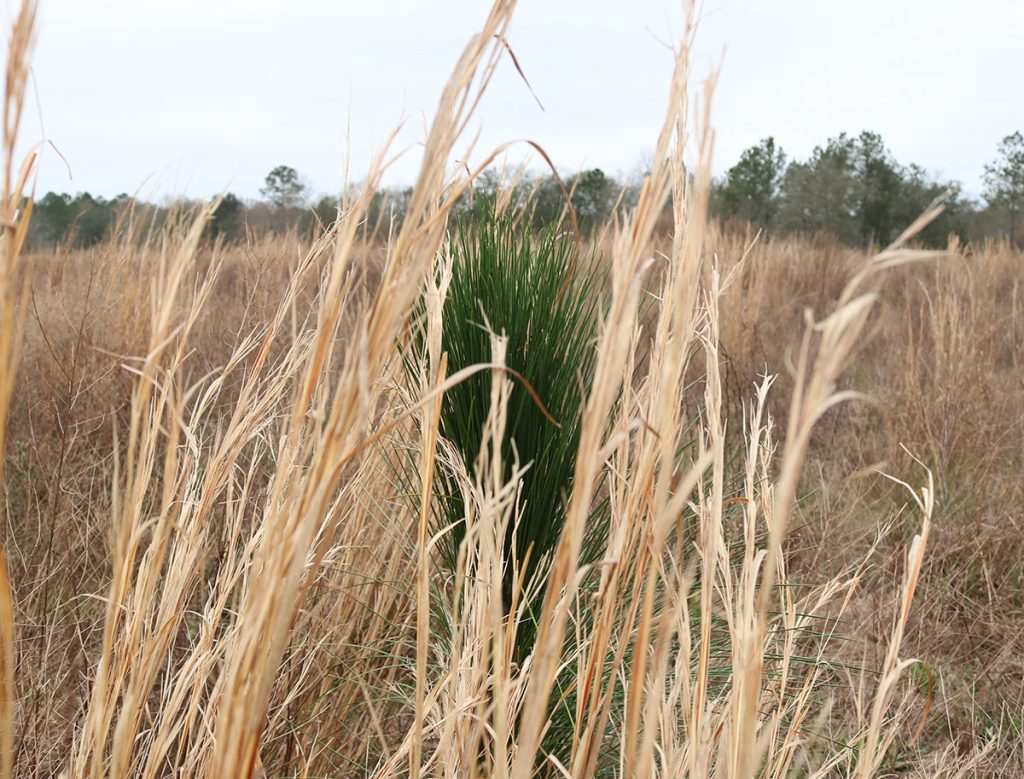
A planted longleaf pine grows in a grassy field. Over time, the hope is that this part of the L. Kirk Edwards WEA is restored to a native longleaf habitat.
A wide diversity of other habitats occupies the 1,782 acres of the area, however. Ephemeral
ponds, cypress swamp, and open marshland house the range of species you’d expect from a diverse
suite of habitats. In fact, nearly half of the area is only accessible by a paddling trail that winds through
the wetter sections of the property. Not many people seem to know about this wild place so near
Tallahassee. I hope that changes.
On a recent walk through L. Kirk Edwards WEA with some filmmakers from WFSU, I searched for
plants and animals to help me highlight its species richness. Pickings were slim. A shed of a large snake,
probably a coachwhip, told us that snakes had been there. A cluster of feathers with canine tracks
leading to them indicated that a predatory event had occurred within the last couple of days. A broken
musk turtle shell far from water suggested that the aquatic creature the shell belonged to had met with
foul play.
But where were the animals themselves?
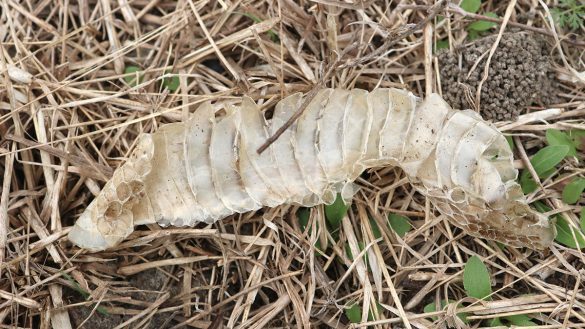
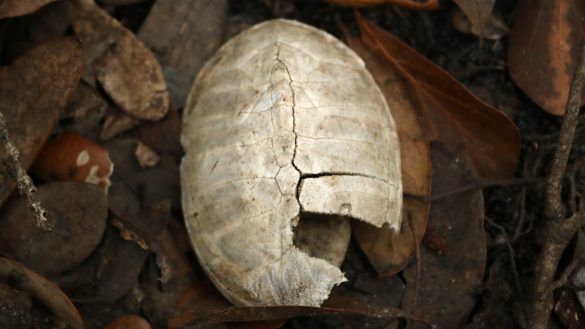
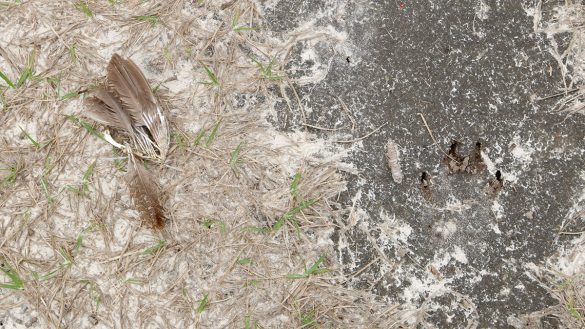
Enhancing Your Nature Experiences with iNaturalist
On this particular overcast day, it seemed that they simply did not want to be seen. Pine
warblers called but never revealed themselves in the canopy, and only a twitch of movement revealed a
well-camouflaged green anole. A day like this would have left me disappointed a couple years ago.
Those were the days before I knew about iNaturalist.
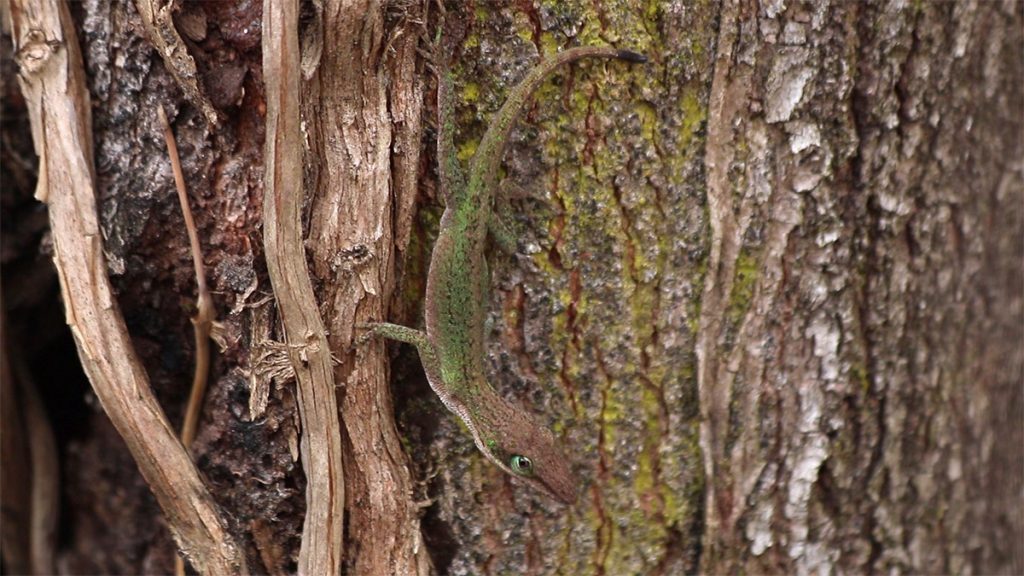
Green anole (Anolis carolinensis), camouflaged on a tree trunk. This species is easily confused with the nonnative brown anole, which has pushed the green anole out of much of its habitat. Both species can turn either brown or green, but the green anole has a longer head with pronounced head ridges.
The website and phone app, iNaturalist, literally changed my life. The app, especially, simply
requires you to snap a photo with your phone and hit “share” to add an observation of any life that you
find. The ability of the app to catalogue the flora and fauna seen on my field forays encouraged my
transformation. I began to take a closer look at the variety of life occupying niches I had never realized
even existed.
Over time, I changed, and so did the app. I witnessed the release of an amazing feature that
allowed iNaturalist to identify observations with the click of a button. No longer did I need to wait for
others to help with identifications, and the accuracy of its suggestions (based on both image and the
range of the species) astounded me. My interests in groups such as insects, mollusks, and milkweeds
grew in concert with the abilities of iNaturalist.
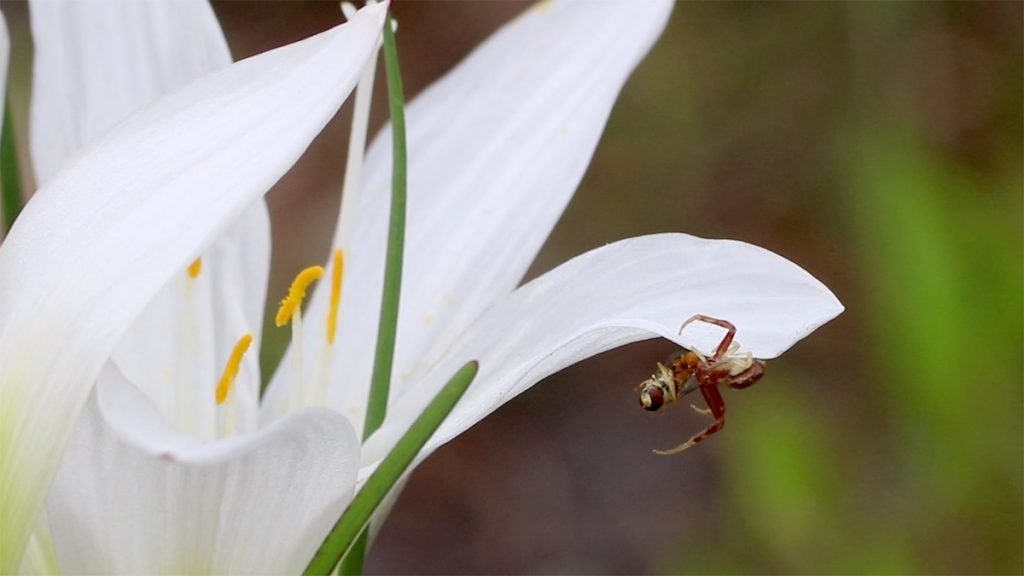
While taking a photo of this Atamasco lily ( Zephyranthes atamasco) for an iNaturalist observation, Peter noticed this crab spider and made a second observation.
Back to L. Kirk (all of its regular explorers refer to it as such). I realized, after some time went by,
that locating species on the larger end of the spectrum would be difficult. With my phone in hand, I
began to investigate rotting logs, artificial cover, and the mucky edge of a marsh. As only a diehard
herpetologist would say, one log looked “perfect.” I rolled it over and…nothing, at least at first. Then I
saw movement. I called Rob and his assistant, Carlee, over to take a closer look.
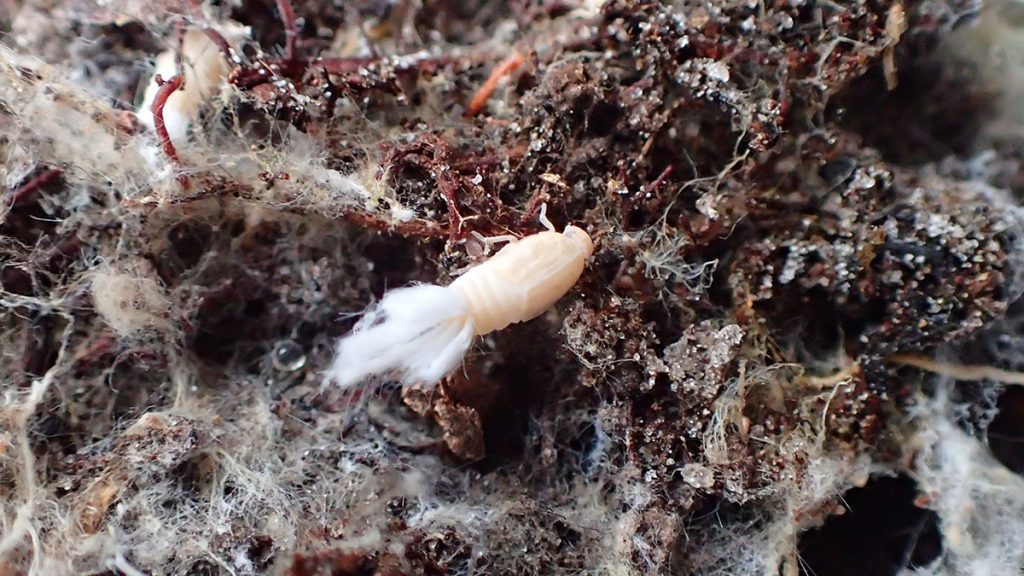
Cixiid planthopper nymph (Family Cixiidae). WFSU’s Rob Diaz de Villegas uploaded an image taken from a WFSU camera and received different suggested species than Peter, starting with termites. In the course of a few hours, other users suggested this family of insects.
Tiny, pale, termite-like creatures scuttled along the underside of the log. Each possessed frilly,
soft hairs on its abdomen. None of us had ever seen anything like these creatures before. We were
stumped. A quick upload of my terrible photo to iNaturalist initially hinted at this being a type of moth larvae, but an upload of a clearer photo later resulted in an accurate identification: Cixiid plant hopper nymph! I rolled the log back to how I found it and we went about our way.
The (Tiny) Predators of L. Kirk Edwards
I learned which one of us was afraid of spiders later in the walk. The three of us approached the
Saint Marks River that slices through the center of the property. No alligators or cottonmouths greeted
us this time, so I decided to walk slowly along the bank. No sooner had I started walking when a leap
caught my eye. I was astonished when I saw what the source of that leap actually was.
A small frog, clearly unaware of the danger it had placed itself in, jumped towards the water.
But the jump that caught my eye was the frog’s peril. A large wolf spider, (Genus Tigrosa according to
iNaturalist), literally pounced onto the spider and injected it with venom from its fangs. I called Rob and
Carlee over to take a closer look.
An already-still frog lay motionless beneath the spider that had begun to slurp the frog’s insides
like a milkshake. I bent down low to watch as the fangs pumped like pistons into and out of the rubbery
skin. Life in its most violent form was happening right in front of our eyes, and it was fascinating.
Rob and a further-away Carlee took photos while I considered how many of these life and death
events were happening within one mile of us.
In fact, it didn’t take long to find an even more sinister predator lurking in the underbrush. This was no bobcat or rattlesnake. No, this was a plant.
A red-tentacled sundew drew my eye to the mossy floor of a nearby wetland. I bent down and
noticed the glistening dew on the end of each tentacle of this dime-sized plant. Though beautiful, this
“dew” is deadly. It smells sweet, and it makes the red of the tentacles even more appealing to insects.
Many plants lure insects in for sexual reasons, but few do so with the explicit purpose of killing.
The sundew, you see, eats insects. It draws them in, then fastens them with its glue-like
substance that gives it its name. The more the insect struggles, the more glue adheres to its body.
Eventually, the hapless insect can’t move and digestion, catalyzed by enzymes the plant secretes,
begins. The insect does not die quickly.
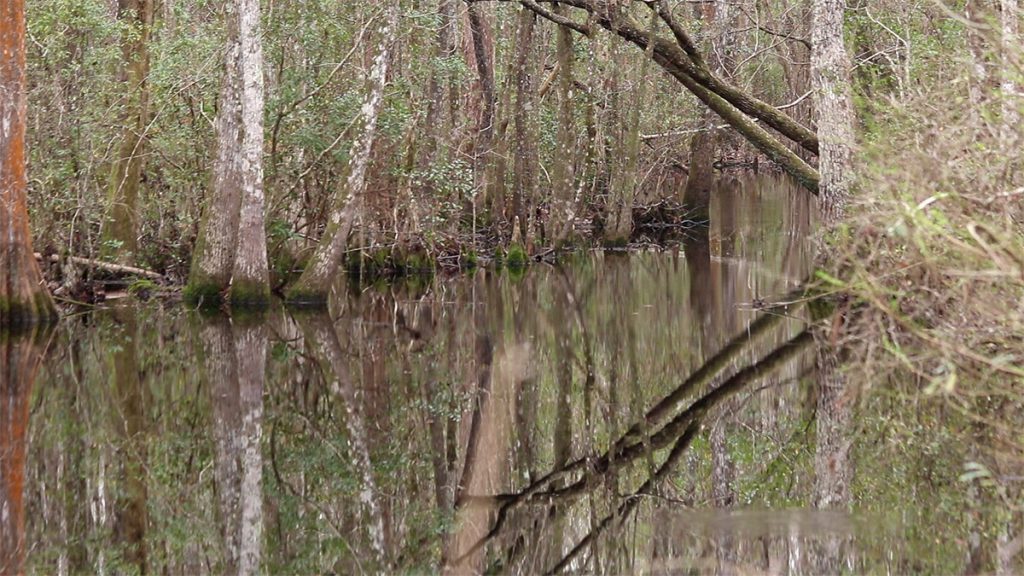
The upper stretches of the St. Marks River run through L. Kirk Edwards. The WEA also includes the southeastern shores of Lower Lake Lafayette. This land offers important watershed protection to both bodies of water.
The City Nature Challenge and EcoCitizen Day
After Carlee photographed the minuscule killing machine, our time at L. Kirk Edwards WEA came
to a close. Our offices beckoned. Tasks began to mount again in my head. We said our goodbyes and left
all of the life unfolding beyond the entrance gate for someone else to discover.
You could be that someone. The Florida Fish and Wildlife Conservation Commission (FWC)
partnered with WFSU, the Coastal Plains Institute and many other partners to highlight the many
examples of life in Leon County. The Leon County City Nature Challenge, coming up in late April,
encourages residents in the area to make iNaturalist observations within Leon County’s natural areas,
schoolyards, and even backyards. EcoCitizen Day, which takes place on Saturday, April 27 and is part of
the City Nature Challenge, will host a number of events that allow people to discover interesting species
living right in our proverbial backyards. The following day, FWC will have biologists on hand to help
people find and identify species through bioblitzes at Lafayette Heritage Park and, you guessed it, L. Kirk
Edwards WEA.
Whether you observe wildlife in your backyard, observe new species with experts at an FWC
bioblitz, or simply feel motivated enough to get out and explore a new part of Leon County, I sincerely
hope that you can see life unfold like I did with the spider and the frog. I hope that time in nature
rewards you and your friends with lasting memories. I especially hope that somehow, whether it’s the
way the sun rises through the trees around you or the way the birds sing to their lovers as if you weren’t
even there, you experience that too-rare feeling that you are but one small strand in nature’s web.
Just know that, sometimes, all you hear is the wind and that’s plenty.
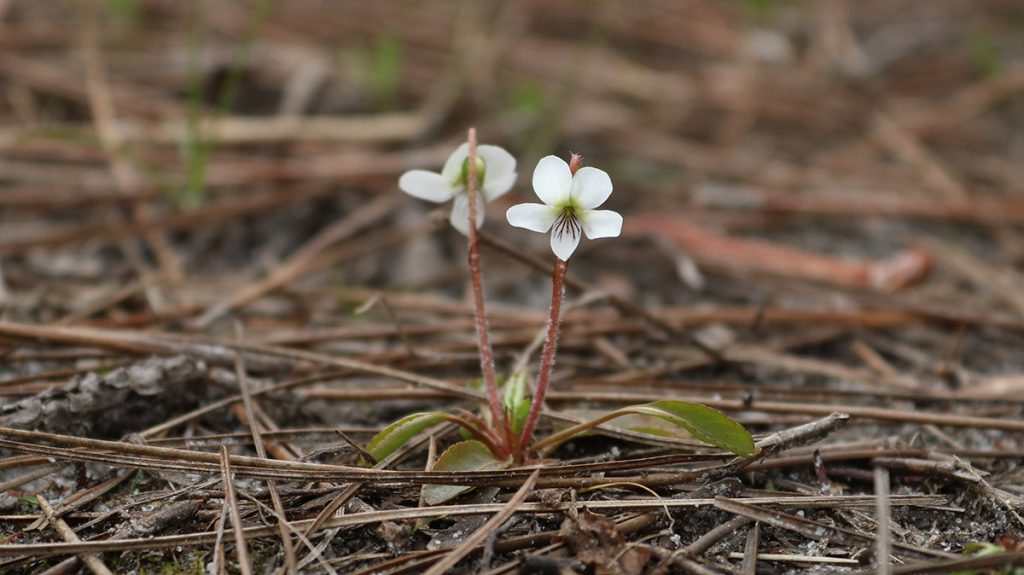
Primrose-leaved violet (Viola primufolia), an identification made after an initial ID of white bog violet.
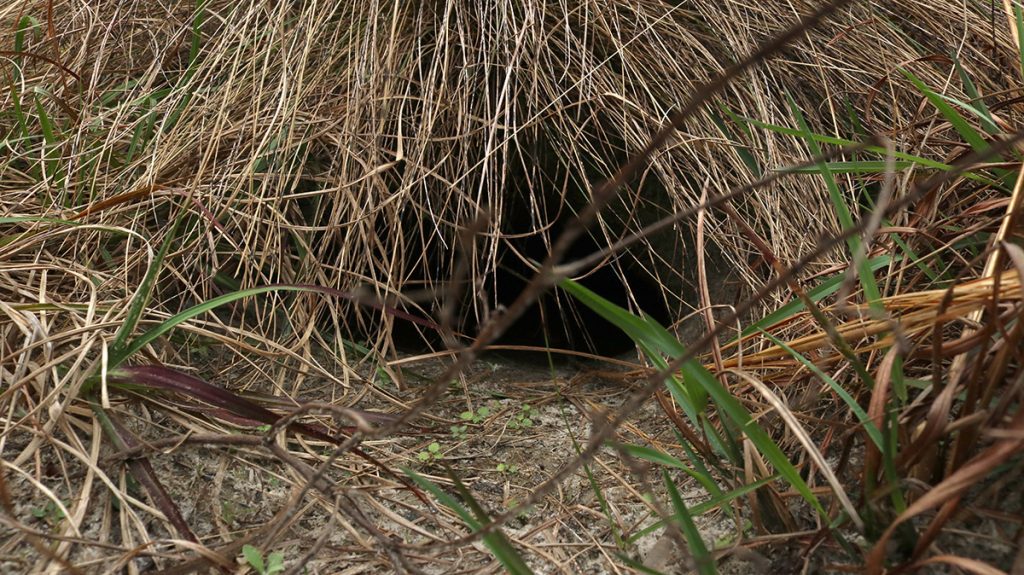
Gopher tortoise burrow at L. Kirk Edwards. The grassy fields where we found this were also riddled with pocket gopher holes.

